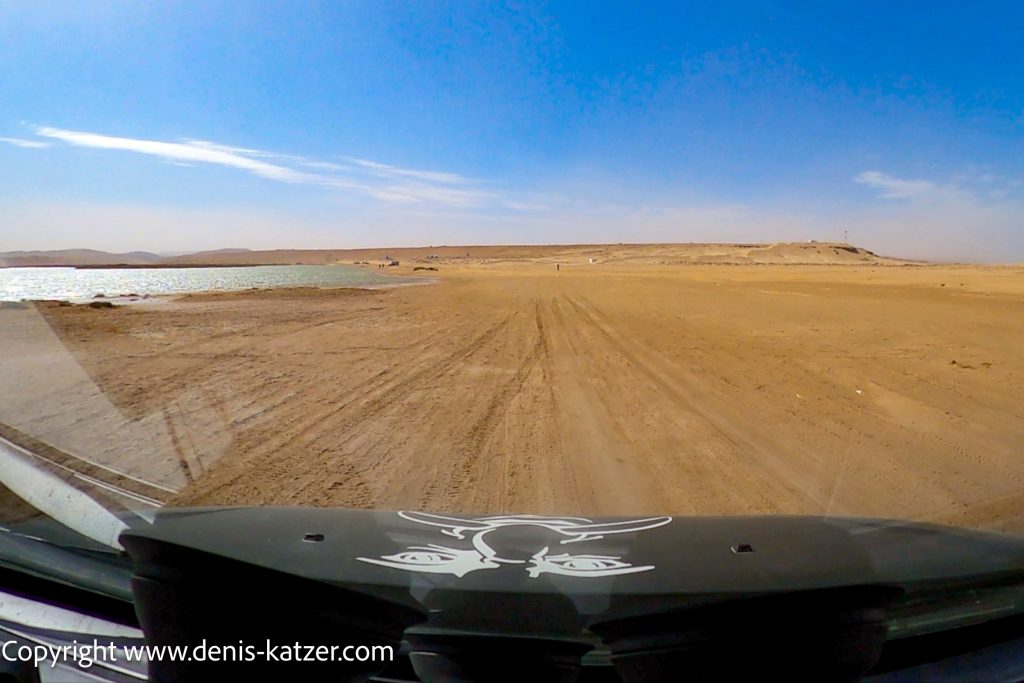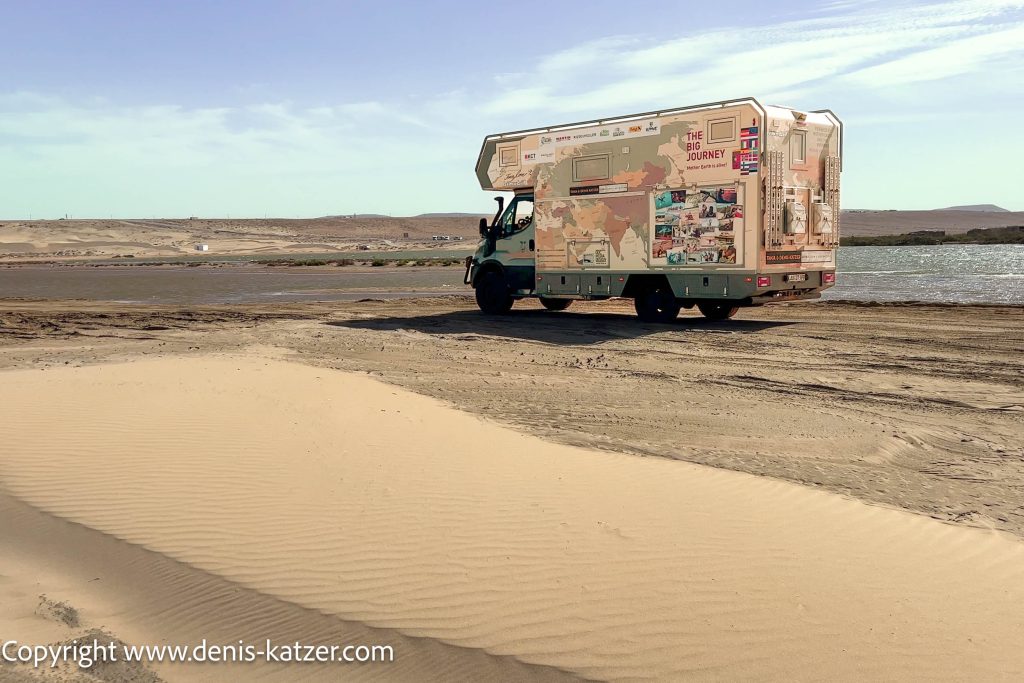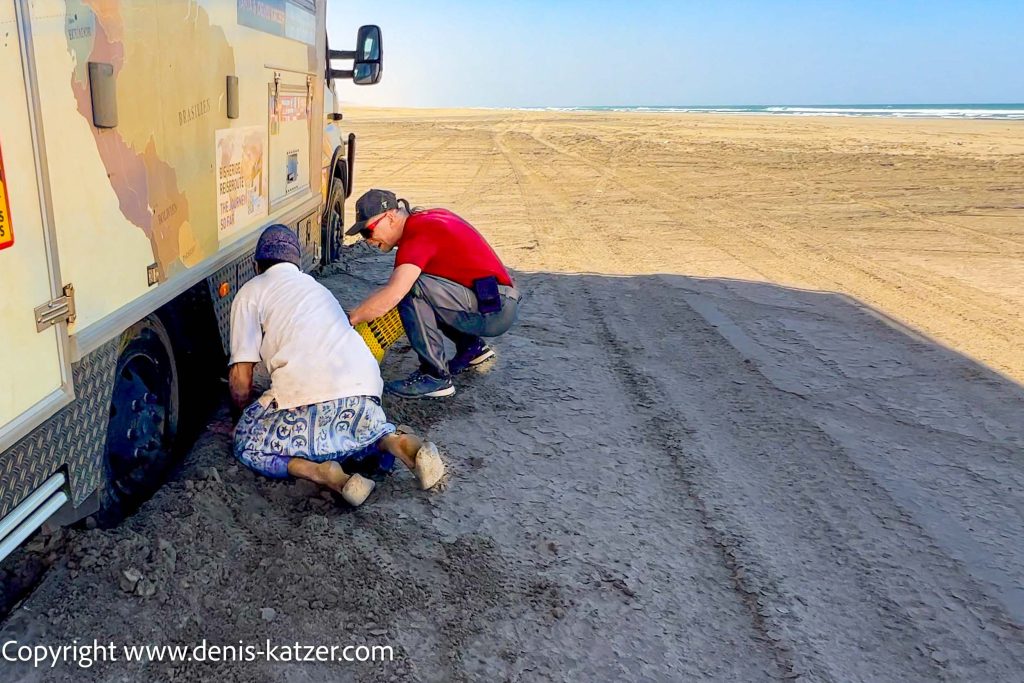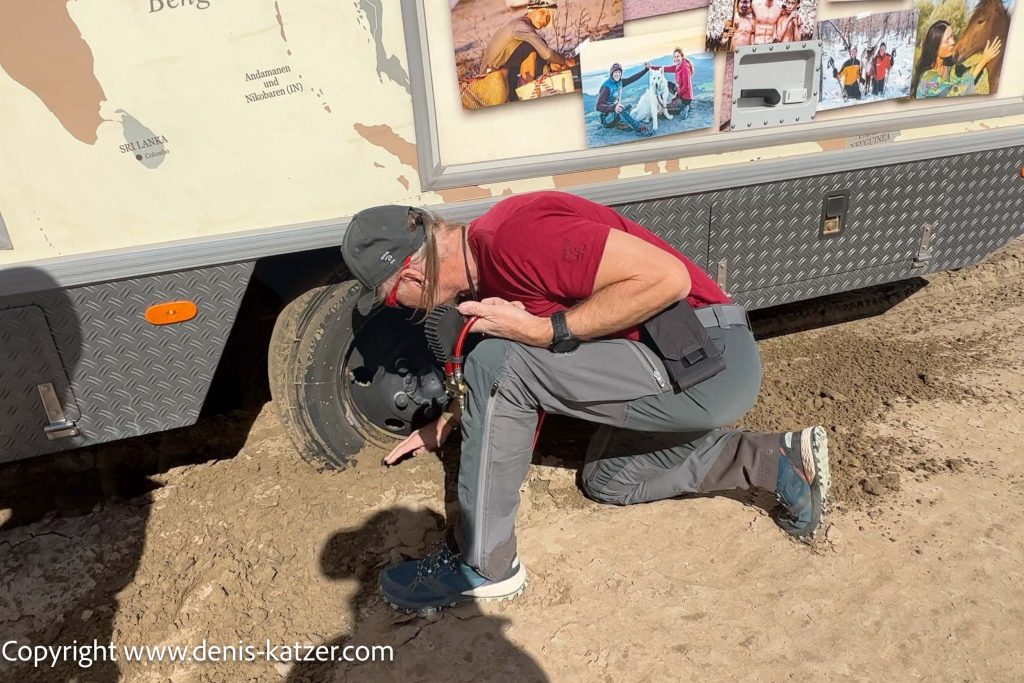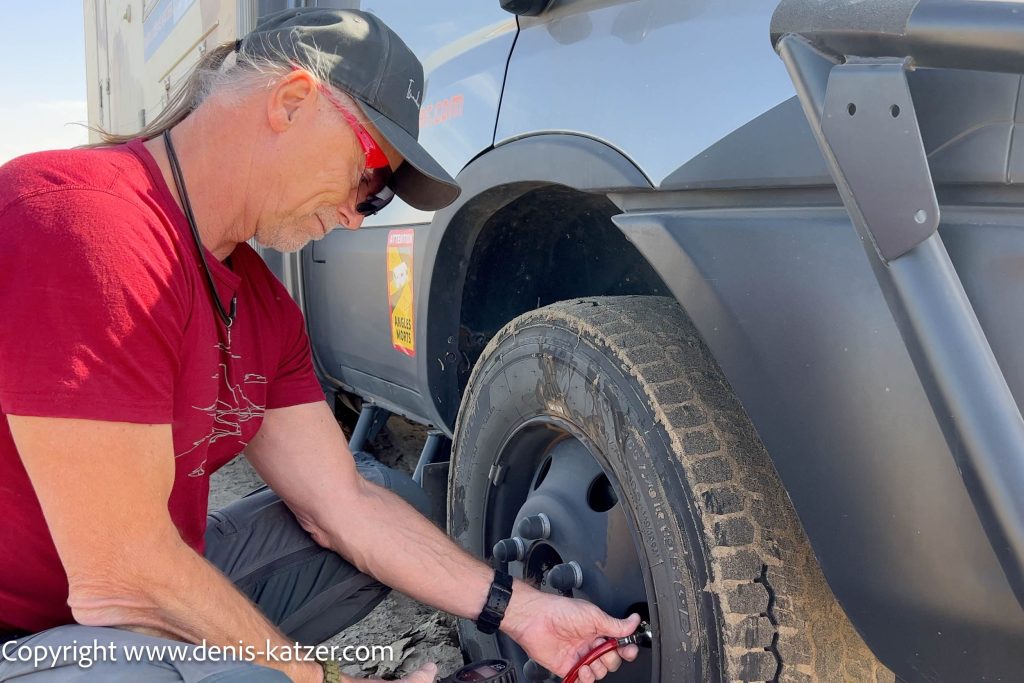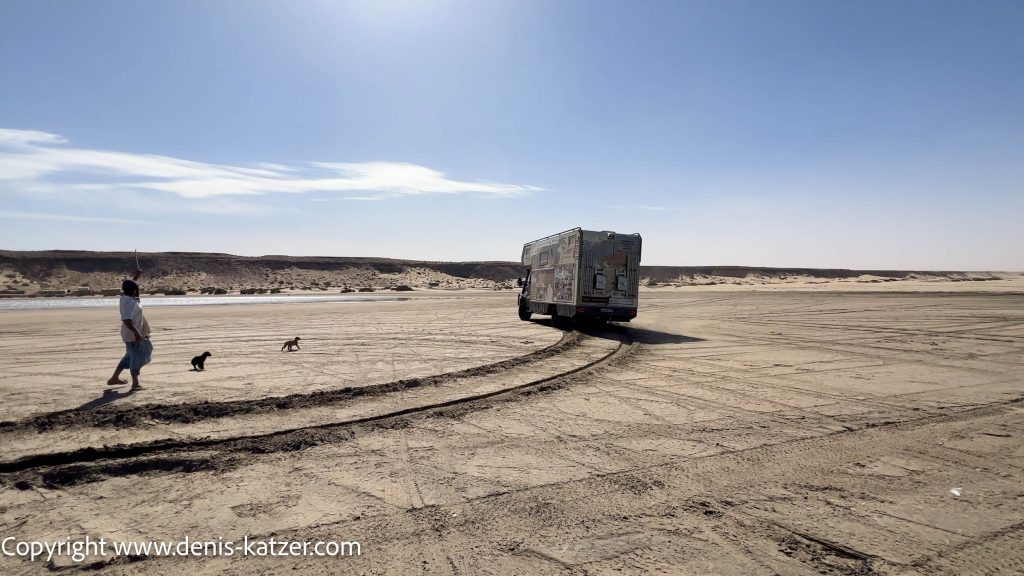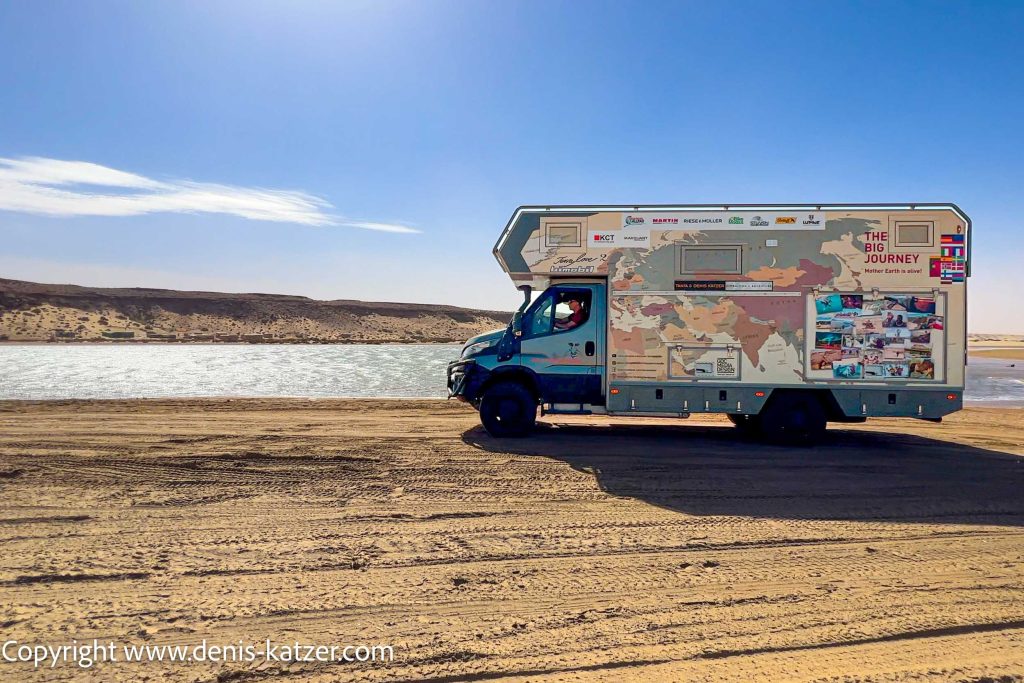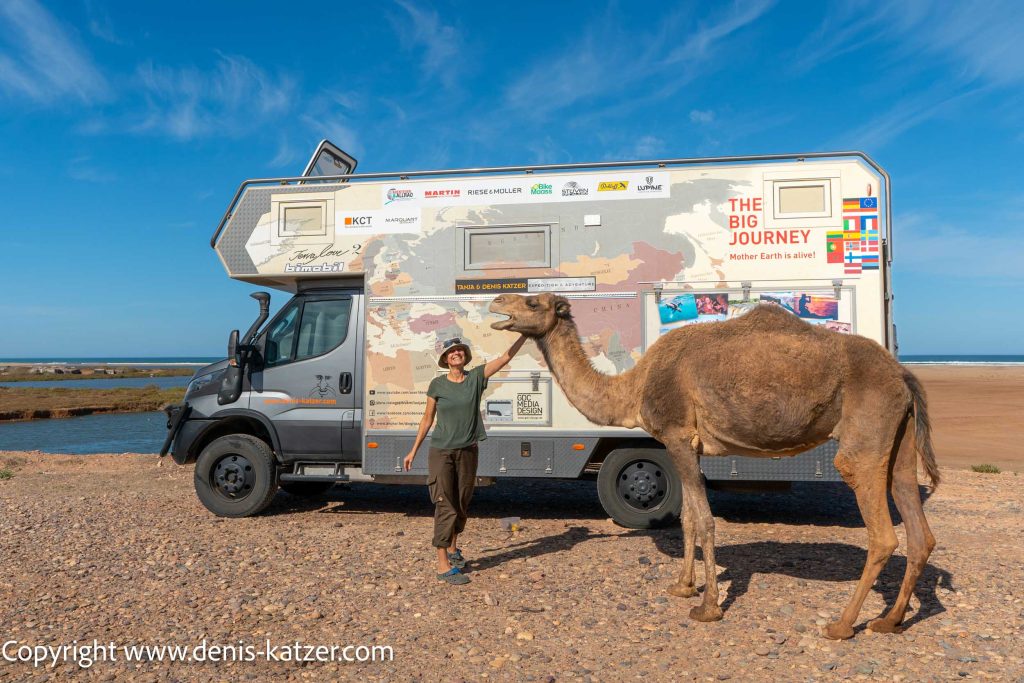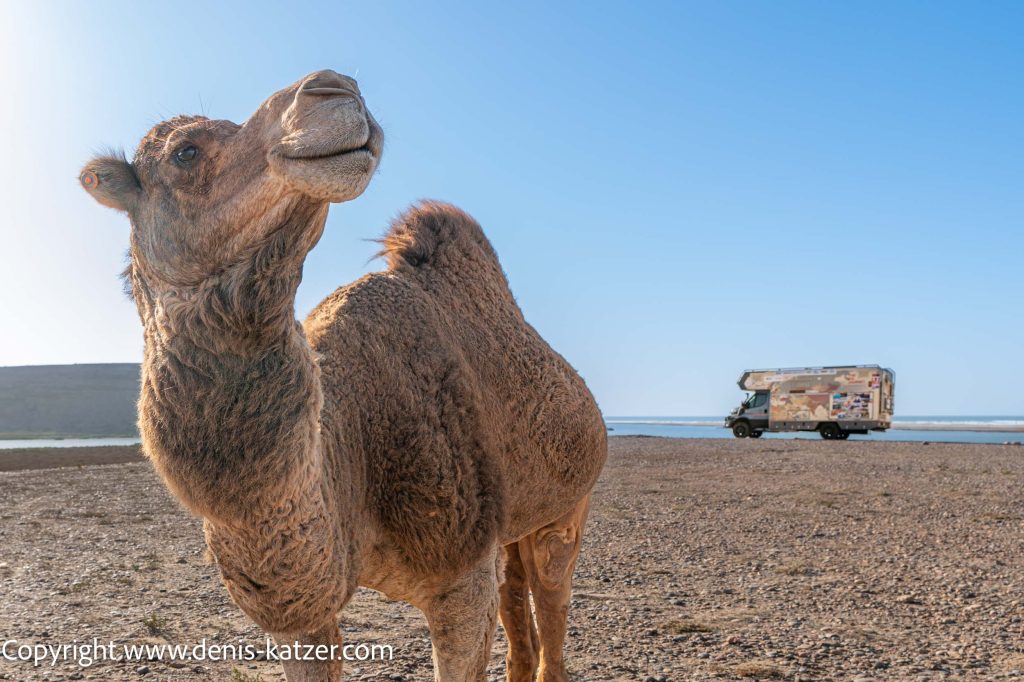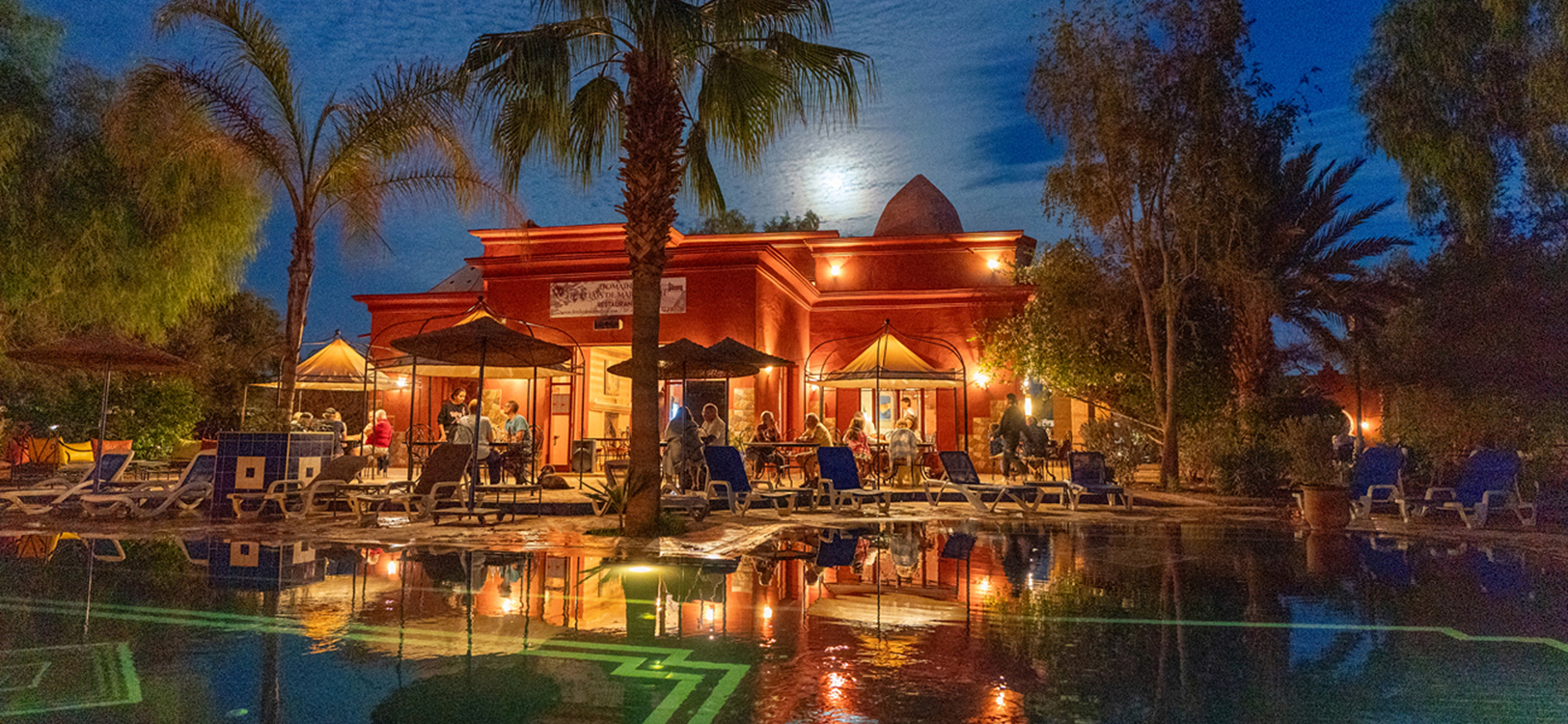
“We’re sinking!” shouts Tanja
N 28°57'39.8" W 010°36'25.1"
Day: 02/04/2024
Day: 429
Camp 77
Country: Morocco
Location: Plage Blanche beach/parking lot
Latitude N: 28°57’39.8″
Longitude W: 010°36’25.1″
Total kilometers: 11,658 km
Height: 10 meters
Temperature day max: 24°
Night temperature: 12 °
After spending a few days on a beautiful cliff on the Atlantic Ocean and watching the off-roaders who ventured onto the exciting 170 km long route of the Plage Blanche, we drove on to a campsite that is also located directly on the Plage Blanche. From here, you can easily reach the Plage Blanche and enjoy an extraordinary ride between the sea and the dunes.
No sooner have I turned the ignition key and caught my first glimpse of the wonderful beach than a few curious visitors come by. As Tanja and I have covered almost 12,000 kilometers with camels during our great journey over the last 33 years, our hearts always open when we see these wonderful animals with which we have spent so many years of our lives.
In Morocco, by the way, there are mainly dromedaries, which are characterized by their single hump. These animals are perfectly adapted to life in dry desert areas. They are traditionally used as pack animals and are still an indispensable means of transportation in the desert. Nowadays, they are also a popular attraction for tourists. Especially in regions such as Erg Chebbi and Erg Chigaga, many visitors enjoy camel tours through the impressive sand dunes, which we will also be visiting in the coming weeks.
But camels are not only beasts of burden for the locals, they also provide milk and meat, which are important sources of food for the people in the desert regions. Camels are vital for the Berbers and other nomadic tribes. They symbolize wealth and status and are an integral part of nomadic culture. They also play an important role in various cultural and religious festivals. These fascinating animals are perfectly adapted to life in extremely dry and hot environments. They can travel long distances without water and eat a variety of desert plants that are often inedible for other animals.
But despite their impressive adaptability, camels are not protected from modern challenges such as climate change and overgrazing, which can affect their habitats and food sources. In Morocco, goats and sheep often eat garbage to survive, especially in rural and poorer areas. This is due to poverty and scarcity of resources, which prevent many farmers and herders from providing their animals with high-quality feed. In addition, grazing areas are often restricted by overgrazing, drought and soil degradation, and poorly organized waste disposal makes garbage easily accessible to animals.
This practice has serious health consequences for the animals. Swallowing plastic and other non-digestible materials can lead to digestive problems, poisoning and even death. The quality of meat and milk can also be impaired, putting the health of people who consume these products at risk.
Although Tanja is initially not enthusiastic about riding a section on the Plage Blanche, I finally manage to persuade her. After a night buffeted by the Sahara wind, we leave the parking lot and drive down to the huge beach. Occasionally there are campers on the sand, almost at sea level, which presumably means that the tide does not normally reach this region. A strong wind blows towards us. The scene seems a little bizarre. My adventurous heart beats faster as I ride over the partly packed sand. As there are also normal motorhomes here, we are relatively relaxed, because where they can drive, it shouldn’t be a problem for our Terra Love.
On one side is a fjord with probably shallow water, on the other side the waves of the Atlantic crash onto the sand. In some places, small dunes rise up, over which the wind whirls fine sand into the air.
A friend warned us a few days ago that there are places near here that consist of extremely fine, damp sand in which, according to him, any vehicle would sink hopelessly. The sand is so treacherous that if you fall in, you won’t be rescued because the vehicles that could rescue you will also sink into it, which in the worst case means losing your motorhome.
We keep a close eye on the ground and follow the lanes in front of us so that we can be sure we don’t accidentally end up in one of these dangerous sand fields. Apart from that, we hadn’t planned to drive 170 kilometers along the Plage Blanche, but just a few kilometers to get a bit of a feel for what it’s like to drive on the famous beach, like many other off-roaders. As the sand gets softer, I stop to engage the center and rear differential lock, and suddenly the thing we were afraid of all along happens.
My pulse is beating up to my neck. Did we really have the misfortune to run into such a disastrous sand field on this short stretch? I just can’t believe it and I’m really annoyed that I didn’t listen to Tanja right from the start. I quickly get out to see how deep we have sunk. In order not to make Tanja nervous, I try to smile and get the pressure gauge to let the air out of the tires. “Why didn’t I do this before?” some people will ask themselves. Well, so far we’ve been riding on hard sand, so it just wasn’t necessary yet, and apart from that we were just about to turn back.
A desert dweller suddenly appears. Where did he come from? I have no idea. He is friendly and, instead of just watching some campers who are just a stone’s throw away from us, he immediately starts digging away the sand around the tires with his bare hands. What a nasty situation, out of all proportion to the fun of driving along the beach. It’s my own fault, I keep thinking.
“And what happens when the flood comes? When will the flood even come? How much time do we have left? Will we lose our Terra Love?” my thoughts whirl through my increasingly panicked brain. After my God-sent helper and I have dug out the tires, which have sunk as far as possible into the fine, damp sand, we place the sand plates – in our case traction boards – in the exposed track in front of the tires. So we hope that our Terra Love will find its footing again and that I can free it from the sand.
The moment of truth has now arrived. I get into the Terra and concentrate. I only have one attempt – if it doesn’t work, we’ll have to start all over again and time will run out before the next flood. I engage the gear reduction, accelerate boldly, it jolts briefly and then… we are free again. Yeaa!
What an adventure. Had it not been for the fear for our Terra Love, our home, our home on wheels, our pride and eye candy and our future for the trip to South Africa and the rest of the world, I certainly wouldn’t have been so scared. Perhaps it was unfounded, but for us it was the first time that we got stuck in what was certainly not a safe stretch of land. Fortunately, everything turned out well.
Has something similar ever happened to you? Or are you careful not to get into such a situation in the first place? Real adventure is ultimately difficult to calculate. Once you’ve mastered it, you feel great. If it goes wrong, some people will say: “See, I warned you.” And exactly when the challenge strikes, you live in the here and now. You feel the pulse beat and forget all the worries you had before. Ultimately, that’s exactly what makes a real adventure.
We don’t want to be boxed in and are looking forward to further adventures. We remain confident and try to keep the adrenaline level in check.
Here is the link to the video:
